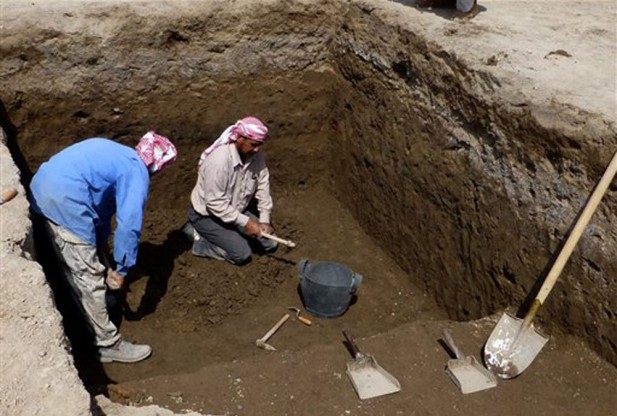
"This is a breathtaking find and we feel privileged to be the first to work at this important site," explained Professor Stuart Campbell, the head of the University of Manchester archeology department.
This small team also feels privileged to be the first group of British archeologists to dig in South Iraq since the discovery of the Royal Tombs in the 1920s by Sir Leonard Woolley.
"It has been off-limits to international archaeologists for many decades, so the opportunity of re-engaging with the study of the earliest cities is a truly exciting one," said Campbell.
According to the University, this building features a collection of rooms and a small courtyard outside. The entire complex is situated about 12 miles away from the ancient city of Ur.
"The surrounding countryside, now arid and desolate, was the birthplace of cities and of civilization about 5,000 years ago and home to the Sumerians and the later Babylonians," explained Campbell in a statement.
During their trial excavations, the team unearthed a small clay plaque standing about nine centimeters tall that depicts a worshipper walking to a "sacred place." This worshipper is dressed in a long robe with fringed edges.
Campbell says that finding buildings of this size and this age are extremely rare.
According to the Daily Mail, this new finding and the team's permission to excavate the area can be attributed to the invasion of Iraq. Cut off from the international society, Saddam Hussein blocked access to these ancient lands to foreigners for many years during his regime.
Professor Campbell and his team first noticed the building as they were taking satellite photos of the area.
"The satellite photos suggested the presence of a substantial building, and our survey has indeed confirmed that there is a building about 80m square, probably connected to the administration of Ur," said Campbell.
"We provisionally date the site to around 2,000 BC, the time of the sack of the city and the fall of the last Sumerian royal dynasty."
Other sites have also pointed out that this time frame places the building around the time of Abraham and the origins of the Judeo-Christian and Islamic faiths.
As they unearth this ancient structure, the team also plans to piece together the economic and environmental story of the era by analyzing animal and plant remains found in the area.
"The aim is to help rebuild capacity in archaeological expertise and heritage management, working alongside members of Iraq's State Board for Antiquities and Heritage, and to address the 20-year isolation from the international community," said Campbell in closing.



So the invasion of Irak is a good thing !
beacause "According to the Daily Mail, this new finding and the team's permission to excavate the area can be attributed to the invasion of Iraq. Cut off from the international society, Saddam Hussein blocked access to these ancient lands to foreigners for many years during his regime".
Shitty journalists, screwed up archeologists...